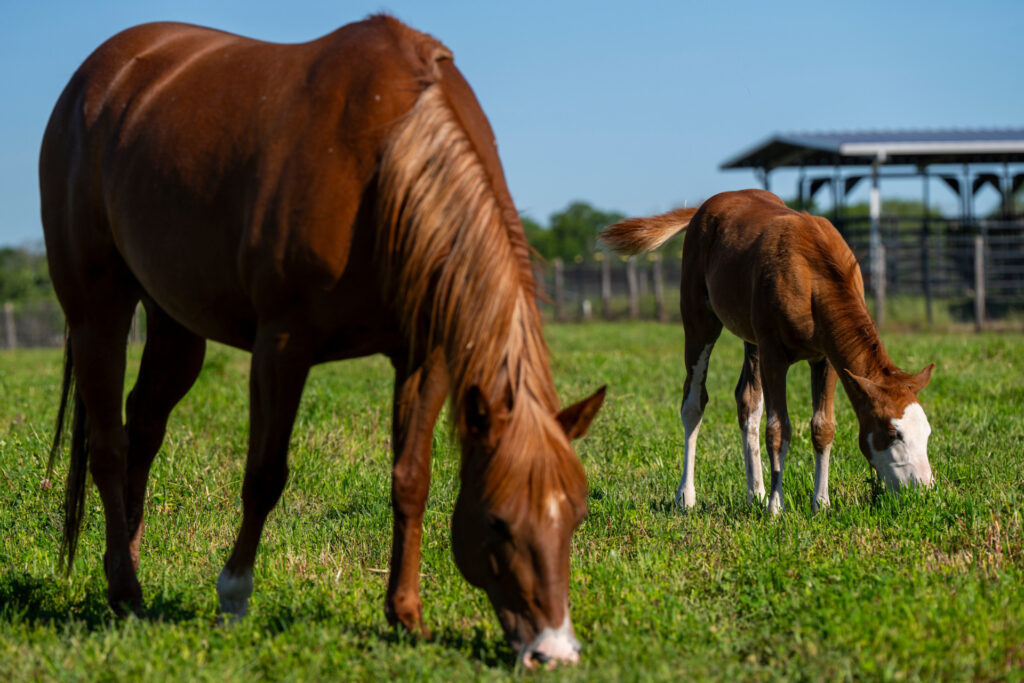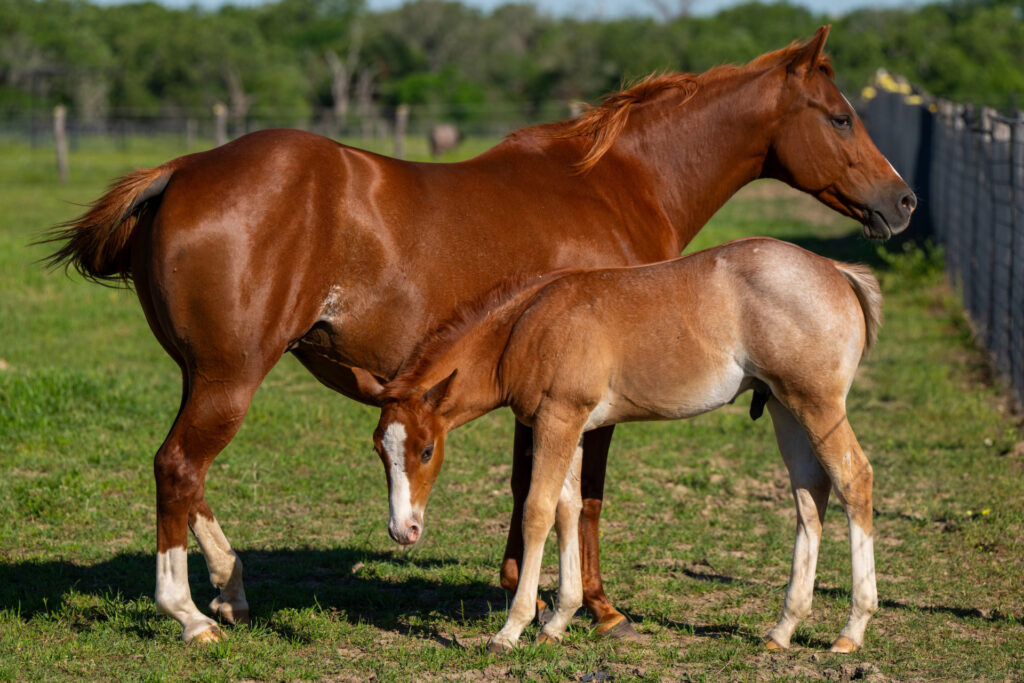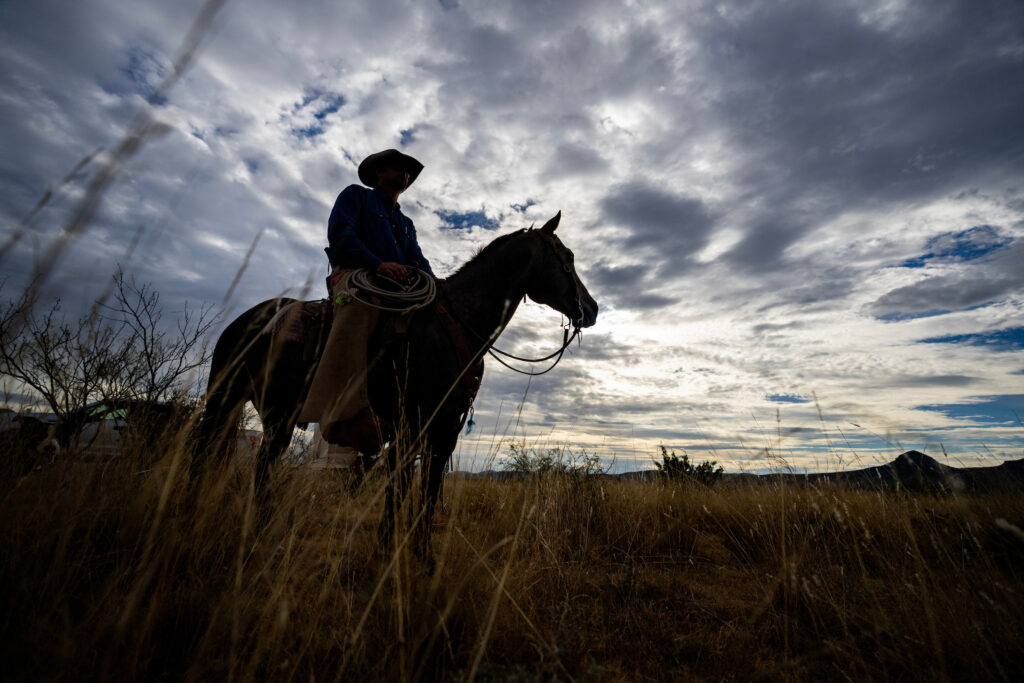Unveiling the economic influence of Texas’ horse industry
New survey data provides insights and educational avenues of horse enthusiasts
Armed with fresh, long-awaited data, the Texas A&M AgriLife Extension Service horse specialists in the Texas A&M Department of Animal Science are actively strategizing ways to cater to the diverse needs of horse owners and enthusiasts, spanning various equestrian activities.

The results of the American Horse Council’s National Economic Impact Study survey are in. Chelsie Huseman, Ph.D., one of two AgriLife Extension horse specialists in the Texas A&M College of Agriculture and Life Sciences, said they will use the extensive Texas data on horse industry impacts, involvement and economic contributions to guide education and outreach.
FAST FACTS
The horse industry is responsible for 155,000 direct jobs and adds $6.5 billion in direct value to the state economy. These direct impacts drive a further $5.8 billion in added value to the economy and more than 56,000 jobs from indirect and induced effects.
Texas has an estimated 748,829 horses, about half of which are quarter horses.
30.48% of households, or 3 million people in Texas, contain horse enthusiasts.
Non-owner participants and spectators spend approximately $3 billion in Texas on travel, dining and lodging while participating in and attending events.
252,326 horses in Texas are used for recreational purposes.
The age category with the largest percentage of horse enthusiasts — participants and spectators who do not own a horse — is 18 and under.
“The equine industry significantly fuels Texas’s economy,” Huseman said. “However, the lack of concrete data makes it challenging to articulate our narrative and make informed decisions. This newfound data will greatly enhance our ability to support both the equine sector and its passionate enthusiasts statewide.”
“There’s an undeniable allure to horses,” Huseman said. “I particularly enjoy engaging non-horse owners because their fascination and affection for these animals are truly remarkable and refreshing.”
Institute of Equine Sciences Director Craig Huffhines aptly noted, “The horse is the gateway to agriculture.”
Huseman agreed that this statement holds true because when the public contemplates engaging in agriculture, their first inclination isn’t to purchase a pig or acquire a goat. Instead, they’re drawn to the horse. “This initial attraction often leads individuals into the agricultural industry. As they delve deeper into agricultural knowledge, they may eventually expand their ownership to include other livestock.”
Changes in the horse industry
There are approximately 6.66 million horses in the U.S. Texas has the largest population, with about 748,829, slightly below the 2017 estimation of 767,000. The next closest state is California, with 477,400 horses.

“The drop in horse numbers of about 20,000 sounds like a lot, but the national economic impact study found that even though population numbers dropped, the economic impact increased,” Huseman said.
The survey reported the equine industry has a $6.5 billion direct value and a $5.8 billion added value. This equates to a total value added to the Texas economy of $12.3 billion.
Another part of that conversation, Huseman said, especially in Texas because of urbanization, is the amount of land being used by horse owners for their operations and recreational activities. Land owned or leased for horse-related uses in Texas is estimated at 1.6 million acres or about 2.2 acres per horse.
“That’s always an interesting figure to consider, knowing how valuable land is and how it is becoming harder to come by due to urbanization,” Huseman said. “It shows that the horse industry plays a significant role in preserving agricultural land.”
Another area of interest is where the owners are raising their animals, and Huseman said that impacts their educational programs.
“Focusing some of our programming and educational resources on how to manage a smaller herd on smaller acreage is one of the areas we’ve moved toward just in the last five to 10 years,” she said. “More people own just a few horses on five to 10 acres and fewer large operations or ranches run herds of horses.”
The survey also revealed a striking 55% decline in national breeding registries over the past two decades. Huseman attributed this decline to several factors:
— A significant shift occurred in 2007 when horse slaughter regulations changed, prompting a heightened emphasis on responsible breeding practices.
— The necessity for horse registration to engage in equestrian activities has diminished. While some events require registered horses, many are open to all equines, prompting enthusiasts to recognize the accessibility of participation regardless of registration status.
— The higher cost associated with registered horses can dissuade entry-level enthusiasts from registering.
However, Huseman noted a recent trend reversal, with registrations rebounding over the past five to six years. Breed organizations have intensified promotional efforts, educating individuals on the benefits of registration, such as increased horse value, pedigree and ownership verification, and access to member benefits and events.
The surge in horse activity during and after the COVID-19 pandemic further contributed to this rebound, she said. With increased leisure time and a desire for outdoor activities, people embraced horse-related pursuits, providing a welcome boost to the industry.
The non-horse owner opportunity
The survey said 30.5% of households, or 3 million in Texas, contain horse enthusiasts who do not necessarily own a horse. Actual owners are a small percentage of that number.
“This really underscores the fact that there’s a considerable demographic fascinated and passionate about horses, even if they don’t directly translate that into horse ownership,” Huseman said.
She said some things they have started in the past five years to engage the public are aimed at this demographic.
Huseman stressed the significant commitment involved in transitioning to horse ownership, highlighting the importance of educators providing prospective owners with comprehensive exposure to the responsibilities entailed.
To facilitate this, one initiative undertaken this spring involved creating a virtual reality, VR, experience. Texas 4-H equine ambassadors showcased this VR technology at major Texas stock shows, offering the public the opportunity to ride a horse virtually.
“Individuals unfamiliar with horse riding can use the VR goggles to partake in activities such as barrel racing, cross-country riding or leisurely rides, immersing themselves in the equestrian experience from a virtual standpoint,” Huseman said. “By engaging the public in this manner, we aim to support and guide them through the journey of horse ownership, should they consider embarking on it.”
The non-owner participants and spectators are estimated to have spent $3 billion in Texas on travel, dining and lodging while participating in and attending events.
Evolving trends of recreation
Major industry segments highlighted as contributing to the Texas economy are racing, competition, recreation and working horses.



Recreation is the largest sector of the horse industry by population. With more than 2.9 million horses used nationally, providing income for stables, farriers, veterinarians, trainers and other industry providers. It is estimated that 252,326 horses in Texas are used for recreational purposes, with trail riding as the main equine recreational activity. Most trail riders – 87% — use public lands to ride. The recreation sector in Texas has a total value of $1.6 billion added to the economy.
Huseman said the government’s decisions regarding land use and conservation for recreational purposes will remain a prominent topic of discussion within the equine industry.
In relation to this factor, she said they have noted a discernible shift in their educational audience with a growing emphasis on recreational and leisure pursuits. Consequently, there has been a continued effort toward assisting owners in optimizing their management practices concerning topics like nutrition, pasture management, and health and disease.
Youth engagement in AgriLife Extension
Another noteworthy statistic, as Huseman highlighted, underscores that the under-18 age group represents the largest proportion of participants and spectators in Texas’ horse industry.
“The robust horse activities in Texas, particularly within our Texas 4-H program, affirm the significance of supporting youth programming and education within the equine sector,” she said. “This data underscores the importance of continually offering educational resources and avenues for involvement to this demographic.”
The Texas State 4-H Horse Show stands out as a premier educational platform, reaching not only the under-18 demographic but also engaging spectators interested in horses despite not yet owning one, Huseman said. Their involvement as spectators serves as a stepping stone toward potential ownership.
With a noticeable uptick in participation over the past five years, the Texas State 4-H Horse Show and associated projects offer a perfect entry point for youth venturing into the equine industry, she said.
“Many participants are newcomers to horse showing, and our aim is to provide educational components that foster their progression with horses,” Huseman said. “Moreover, we prioritize scholarship opportunities for those youth who develop a genuine passion for the horse industry and aspire to pursue it as a lifelong career.”
Welfare at the forefront
As Texas leads the nation in horse population, the ongoing discussions surrounding equine welfare remain paramount. Texas has approximately 78 animal welfare organizations, contributing $23.1 million to the state’s total value-added economy.
Recognizing the need to assist horses at risk of abandonment or in transition, Huseman spearheaded the development of the Texas 4-H Homes for Horses program. This initiative aims to combat the abuse, neglect and abandonment of horses. By facilitating connections between 4-H youth and at-risk horses, the program instills a sense of responsibility and compassion while providing practical solutions through education, outreach and adoption efforts.
Participating youth can incorporate the rescued horse into their 4-H projects for the year, showcasing them in special classes at the Texas State 4-H Horse Show.
Reflecting on the program’s impact over the past three years, Huseman noted a significant increase in adoption rates, attributing this success to the program’s intervention. Also, she said, adoption partners such as the Humane Society of North Texas experience economic benefits, as the expedited adoption process reduces their expenditure on care for these animals.
Connecting to the future of Texas’ horse industry
Overall, Huseman said the survey is very demonstrative of the value of the equine industry, both in the nation and the state economies. And by looking at those direct, indirect and then induced economic impacts, they can understand those impacts on horse ownership and recreation and equine-related services.
Understanding those impacts will continue to direct the programs they offer, both to the horse professionals and to the horse enthusiasts who one day may become new horse owners.
View the full report of the 2023 Economic Impact Study of the Texas Horse Industry.





